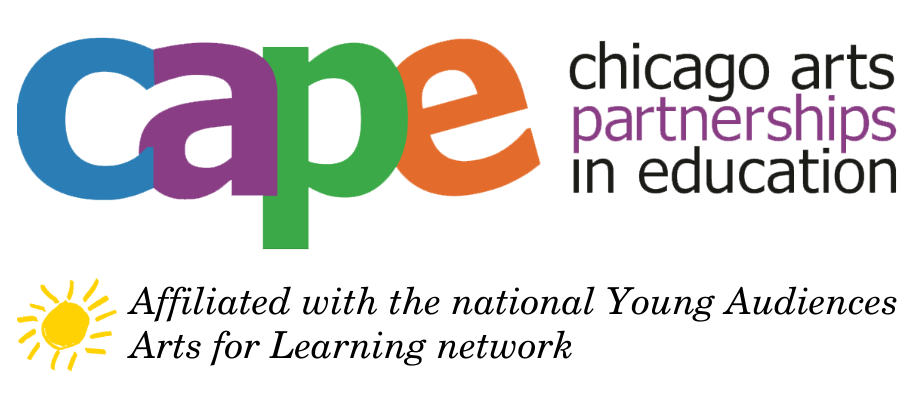Time, Relationships, and Space in Our After School Program
The way we use our time, the way we shape the space we are in, and types of relationships we foster define the work we produce and ultimately say something about the type of people we are. If this is true for you as a employee, a family member, or citizen, it follows that students will also benefit from developing their prowess in these three areas.
For the past two years, we have worked with researcher Susy Watts to investigate the unique qualities of Time structure and Space usage, as well as the collaborative nature of the relationships that exist in our after-school program, called Supporting Communities through Arts Learning Environments (SCALE).

Dance class at Marconi Elementary
SCALE takes place at three Chicago Public Schools this year and is funded by the 21st Century Community Learning Centers Program. A CAPE teaching artist partners with a classroom teacher to work for 28 weeks after or before school to engage with students in long term arts integrated projects. The projects range in discipline from dance to mosaic to fashion design to digital stop motion animation. Students from kindergarten to twelfth grade take on challenging work with their peers and instructors to create innovative, original works of art.

Theatre class at Kinzie Elementary
The fact that students are producing interesting art and enjoy themselves in the program is wonderful, but does not alone satisfy the mission of the program or the agency. There is an impetus to discover how students learn, what processes are involved, and what will be taken away once the program ends. CAPE staff, our researcher, and SCALE instructors delve into an investigation that holds a magnifying glass to the program and uncover the cogs that make it go.

Visual arts class at Waters Elementary
Additionally, it doesn’t hurt that the outputs of this inquiry align nicely with 21st Century Skills as defined by the Partnership for 21st Century Skills:
- Productive Time (Initiative and Self-Direction, Productivity and Accountability, Leadership and Responsibility)
- Transformed Space (Creativity and Innovation, Flexibility and Adaptability, Critical Thinking and Problem Solving)
- Adult to Student Learning Relationships (Social and Cross-Cultural Skills, Communication and Collaboration)

Students and adults work together
In the first two years of the investigation, the practice was defined and tools were created to deepen the practice. Specifically, a Conferring Protocol was developed for teachers and teaching artists to engage their students in dialogue about how they are using their time, how they are transforming their workspaces (classrooms, hallways, lunchrooms, etc.), and how learning relationships develop between students and instructors.

A Kinzie student talks with her teaching artist and teacher about Space, Time, and Relationships
In this third and final year of the investigation, the SCALE instructors will take the next step to execute instructional strategies identified in the last two years and aim to arm students with the tools to transfer their dynamic approaches to the school day and their life outside of school as well.
Contributor:
Joseph Spilberg, Research Associate



